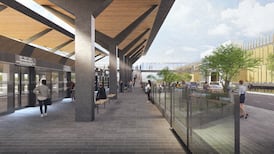All Dubliners have lived their entire lives with a city which is, to varying degrees, derelict.
Dublin’s dereliction waxes and wanes, moves from street to street, but has never in living memory been eradicated.
It’s the backdrop to the lives of Dubliners; they may not see it any more, like people who live next to sewage plants or landfill sites and stop noticing the smell.
That’s not to say it has no impact on people’s lives. The dingy atmosphere of neglect affects people’s perception of the city, of its value, of its safety, even if they don’t notice the number of tumbledown buildings and half-cleared sites they walk past every day – until that is, someone points them out, and then suddenly they seem to be everywhere.
READ MORE
We got a name and an address and we wrote to the individual and told him there were incentives available such as the Repair and Leasing Scheme... He just wrote back and said, ‘It’s my property I’ll do whatever I want with it and don’t contact me again’
— Francis Doherty, chief executive of the Peter McVerry Trust
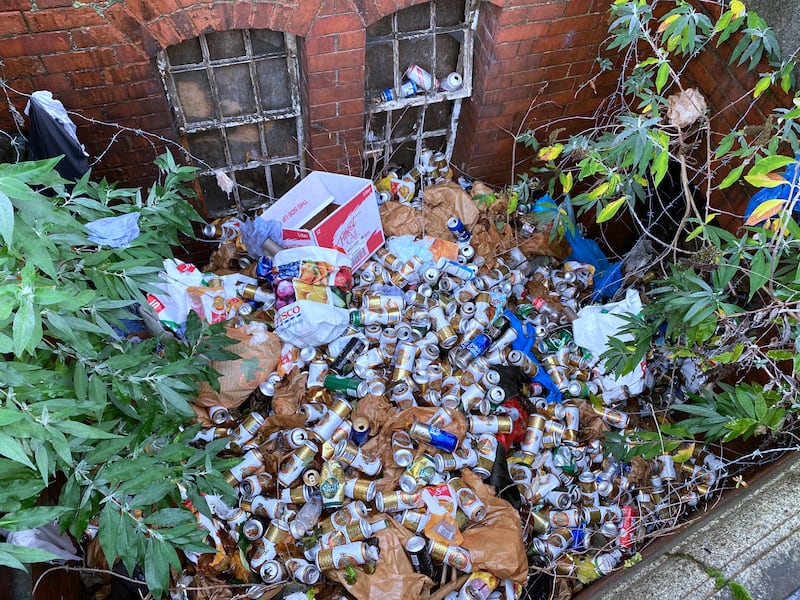
“This one here, it’s been derelict at least since I started working for the trust in 2012,” Francis Doherty, chief executive of homeless charity the Peter McVerry Trust, says as he stands in front of what would have once been a very handsome Georgian house on Gardiner Street Upper, just off Mountjoy Square. The fanlight above the door has been boarded up, the windows too.
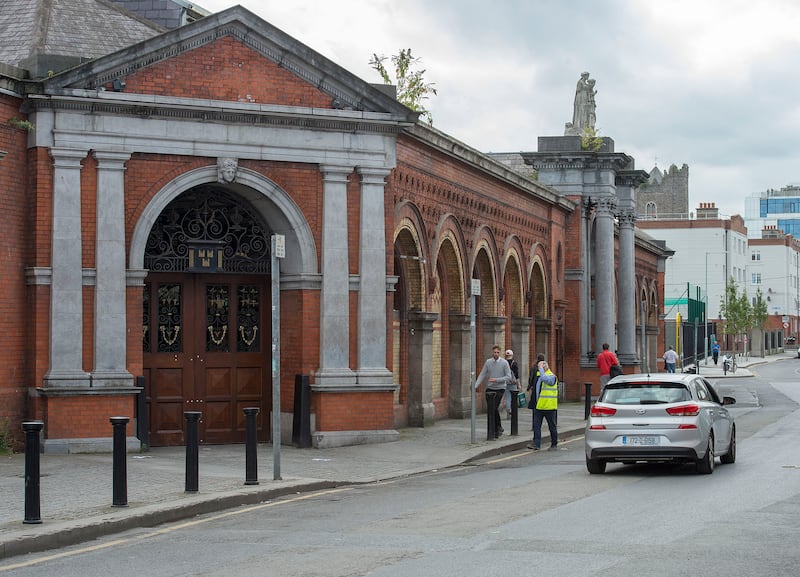
“We couldn’t find an owner registered anywhere, so we asked the neighbours, and we got a name and an address and we wrote to the individual and told him there were incentives available such as the Repair and Leasing Scheme – at a minimum we could have got three or four apartments out of it. He just wrote back and said, ‘It’s my property I’ll do whatever I want with it and don’t contact me again.’ That was 2019, and obviously nothing has been done with it since.”
Turning the corner into Denmark Street, Doherty stops again in front of an even more impressive building close to Belvedere College.
“There’d been a gas leak here and the fire brigade had to come and smash the windows. Eventually they identified the owners, who hadn’t realised the building was vacant – the last tenant had died a couple years previously and they hadn’t noticed the rent had stopped,” he says.
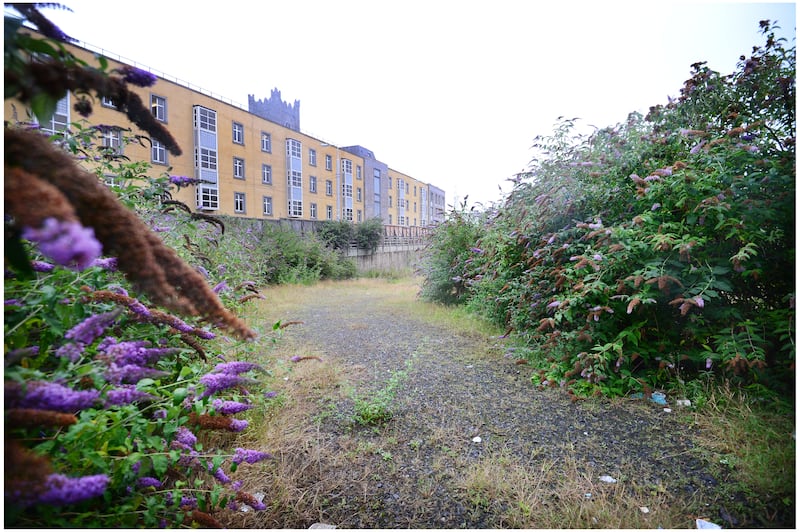
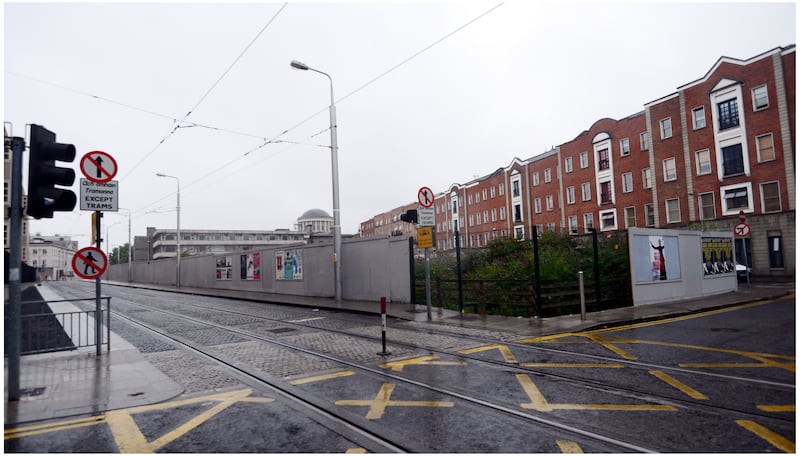
“With this one we had architect’s drawings done, costings done, we discussed the price with the owners, but in the end they decided not to go with us.”
Familiar story
It’s a familiar story for the trust, replicated across the north inner city. These are just two of about 60 derelict or vacant buildings the charity has attempted to bring back into use for homes, largely using the Repair and Leasing Scheme. Introduced in 2017, this scheme provides building owners with an interest-free loan of up to €60,000 to make their property habitable. In return, they must sign up to a social housing lease for a minimum of 10 years, with the value of the repairs offset incrementally against the rental income.
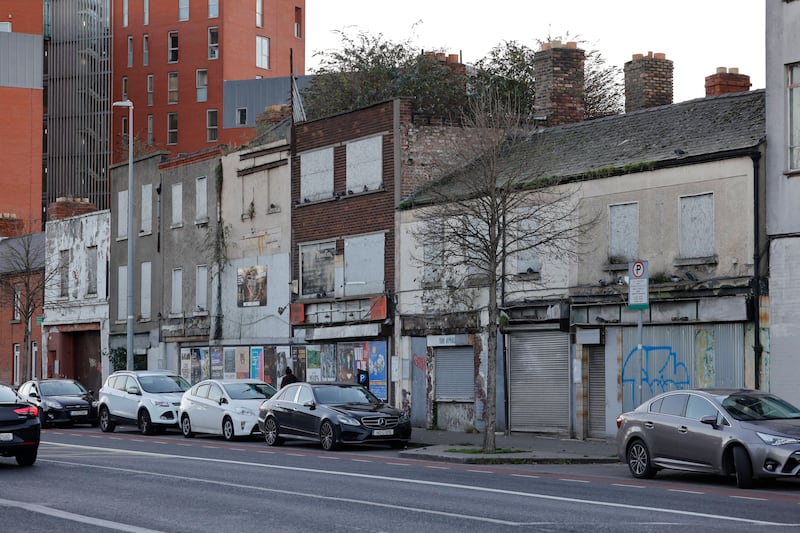
“We concentrated on the north inner city and, of about 50-60 buildings we looked at, probably got engagement with 10-12 property owners, and, of them, we secured only a handful, less than a handful really. We did get some individual houses, largely in the suburbs, but of these city centre properties, very few.”One of the trust’s success stories is around the corner from Denmark Street, on Cavendish Row opposite Parnell Square, another imposing Georgian building.
“This had been a commercial building for years, but we have 13 units here now. We started the conversation on this back in Covid and about 15 months ago the tenants moved in.”
Not too far away on Marlborough Street the trust has recently completed an agreement with the owners of the historic Plough pub, opposite the Abbey Theatre.
We’d ring people, write to them, and say ‘we’d like to use your vacant building’ and they’d get very annoyed with us, because it wasn’t vacant – it was just in a terrible state.
— Francis Doherty, chief executive of the Peter McVerry Trust
Dublin City Council bought the derelict pub for €850,000 in 2017, and spent €80,000 dealing with a rodent infestation and other emergency work before selling it in 2021 to Equitas Properties, owned by Robert and Michael McCarthy, for €550,000.
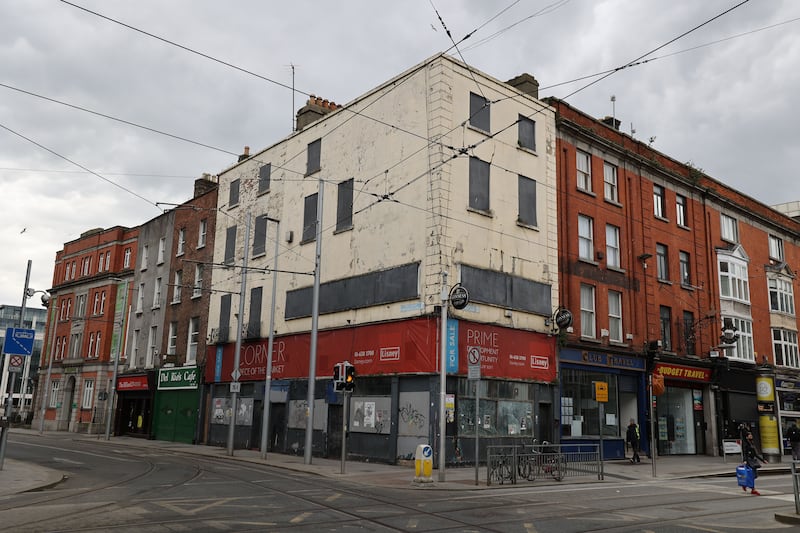
There were some missteps in the trust’s attempts to bring homes back into use, Doherty admits. “We would assign researchers to a particular grid on a map of the city, and they’d walk through it assessing buildings. Then we’d ring people, write to them, and say ‘we’d like to use your vacant building’ and they’d get very annoyed with us, because it wasn’t vacant – it was just in a terrible state. We’d end up writing to Dublin City Council to say you need to be out inspecting that building because it can’t be compliant on safety grounds.”
This brought home to the trust the extent of not just vacancy, but dire dereliction in the city, and the perils of ignoring the worsening condition of the city’s building stock.
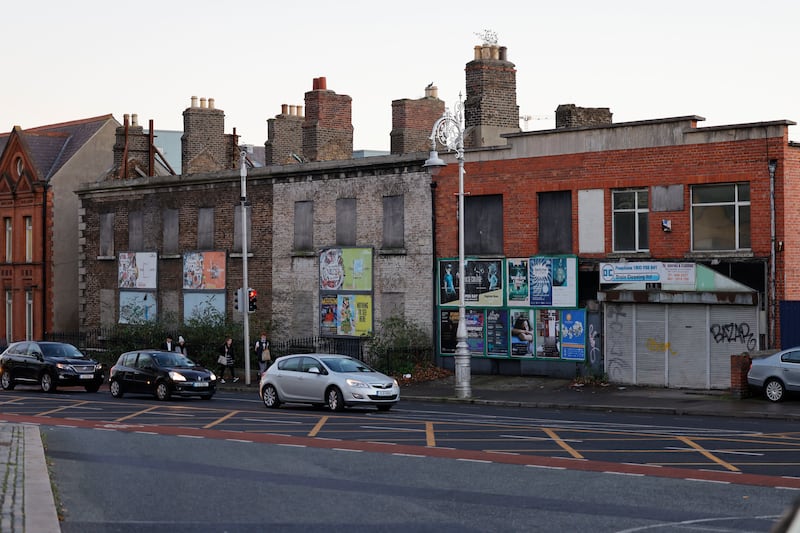
“For me, this points to the fact that we need to look at how building owners maintain their properties on an ongoing basis, so things don’t get to the point where it costs too much to fix, or it falls into obsolescence. The longer a building remains vacant, the more it impacts the adjoining properties and the more expensive it is to bring it back into use.”
Entirely derelict
Tailte Éireann (the new State agency from the merger of the Property Registration Authority, the Valuation Office and Ordnance Survey Ireland) and An Post’s property database GeoDirectory identifies more than 3,200 vacant properties within the city area bounded by the Royal and Grand canals. Almost 30 per cent of these buildings have been vacant for more than four years, leaving them at considerable risk of becoming derelict.
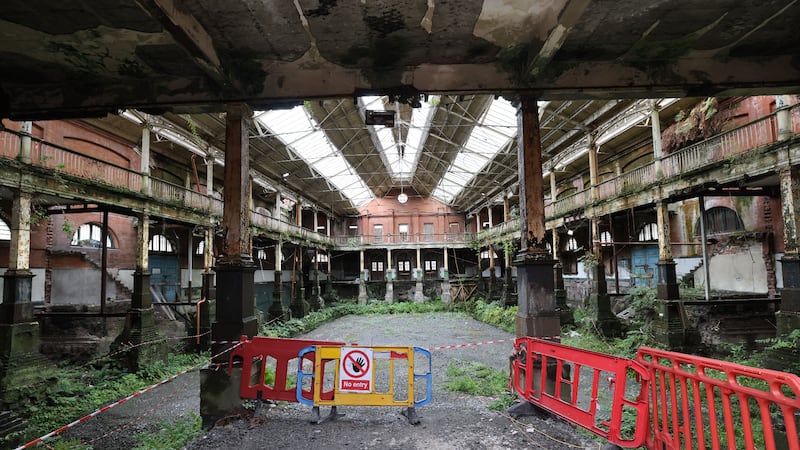
GeoDirectory also maps buildings which are entirely derelict – which it defines as uninhabitable and requiring reconstruction. Just over 70 derelict buildings have been identified by GeoDirectory within the city centre, although some of the almost 1,000 long-term vacant buildings are also on Dublin City Council’s register of 107 derelict sites, which uses a different metric to define dereliction.
These are not overwhelming numbers, but they have an impact on the city far beyond their numerical weight, Doherty says.
“Even in terms of the discussion around inner city and crime, the first signs of breakdown is physical. You start to see properties not being maintained, you start to see the vacant shops not being reopened, you start to see vacancy rates and dereliction rise, and you start to see areas that give off all the signals to people who inhabit them, or people who just passed through, that they are not valued.”
While the trust’s results, when compared with the effort and resources expended, may be dispiriting, they are not atypical. In the whole of the city council area, just 45 applications have been received since 2017 for the Repair and Leasing Scheme to bring houses back into use, and 15 to convert commercial buildings into social housing.
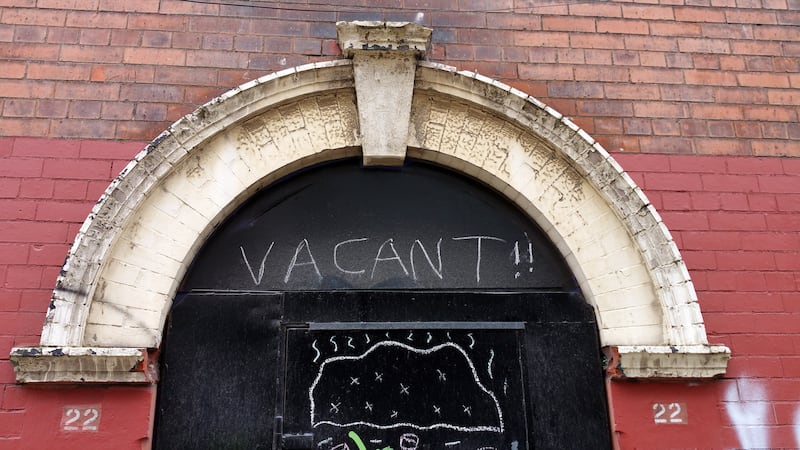
In 2018, the Buy and Renew Scheme was introduced to allow local authorities to buy long-term vacant properties for use as social housing. There’s been a better uptake for this. To date the city council has acquired 101 properties, 54 of which have been refurbished and have been returned to use as homes, with the other 47 still undergoing work.
The council has also since 2017 bought 42 properties that were on its Derelict Site Register, one of which was a half-built apartment complex of 48 homes, which will be used for social housing when they’ve been completed.
Funding schemes have also been in place for private property owners, without the stipulation the homes become social housing. The Living City Initiative was introduced in 2015 and offers 100 per cent tax relief on refurbishment and conversion work to mostly pre-1915 properties. To date, work has been completed on 117 buildings in the city.
Converting commercial properties
From last year the Croí Cónaithe vacant property refurbishment scheme offered homeowners a grant of between €50,000 and €70,000 to use either as a primary residence or to rent out. So far 201 applications have been received by the council, though only six have been granted with 178 still being processed and 17 ineligible.
The council is also seeking to convert former commercial properties into residential use with its new adaptive reuse team set up last October.
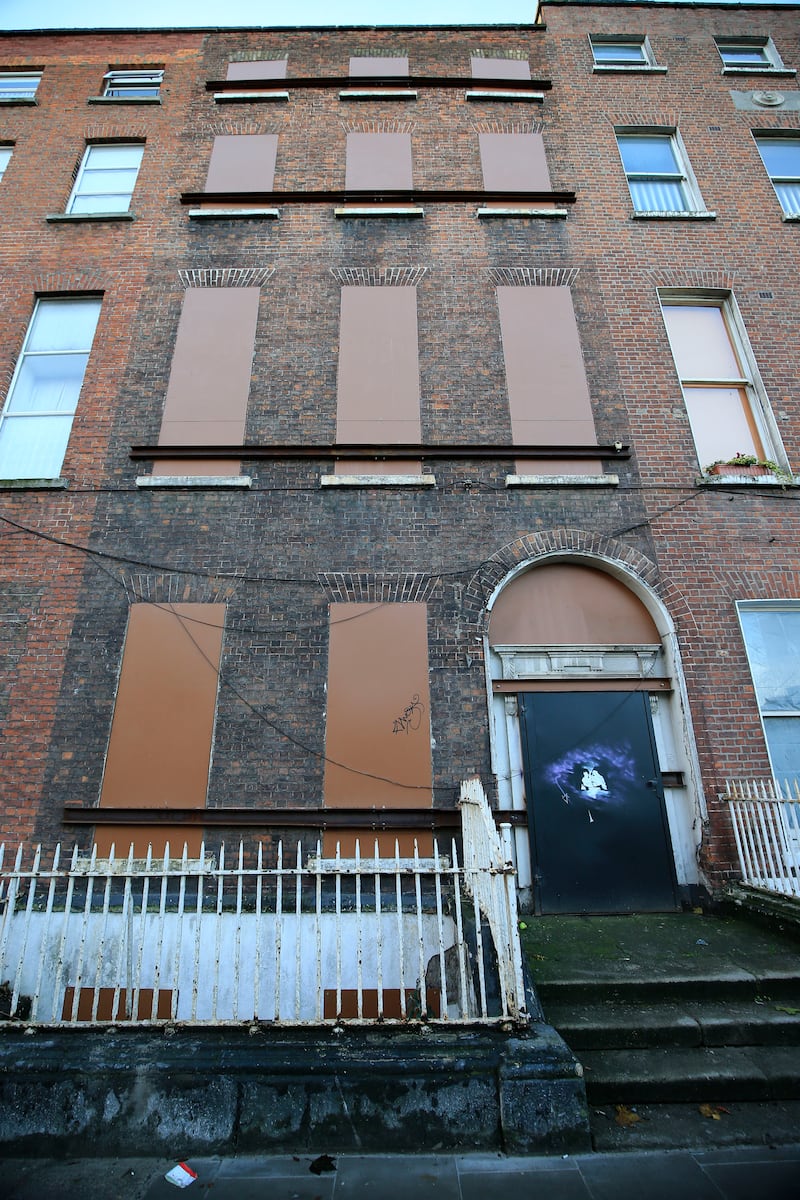
“The main objective is to deliver new homes by refurbishing vacant office and commercial space for use as social housing. The other objective is really to manage city and urban regeneration to restore derelict properties and protect newly vacant properties from degeneration,” Fiona Craven, who is managing the programme, says.
The unit has so far focused on 13 properties, which are at various stages of assessment or acquisition, including former banks, shops and offices, as well as some buildings already owned by the council which have fallen into dereliction.
One of its first schemes will be on Capel Street, which has some of the highest rates of upper-floor vacancy in the city. The council’s law department is currently processing the acquisition of the magnificent Kerr House, a protected structure stretching from 114 to 116 Capel Street. Built in the 1870s and originally a merchant’s house, it had a life as a coffee tavern, a theatre and until recent years traded as Oman Antique Galleries. It will, Craven says, provide four apartments on the top two floors, with the ground floor retained for commercial use.
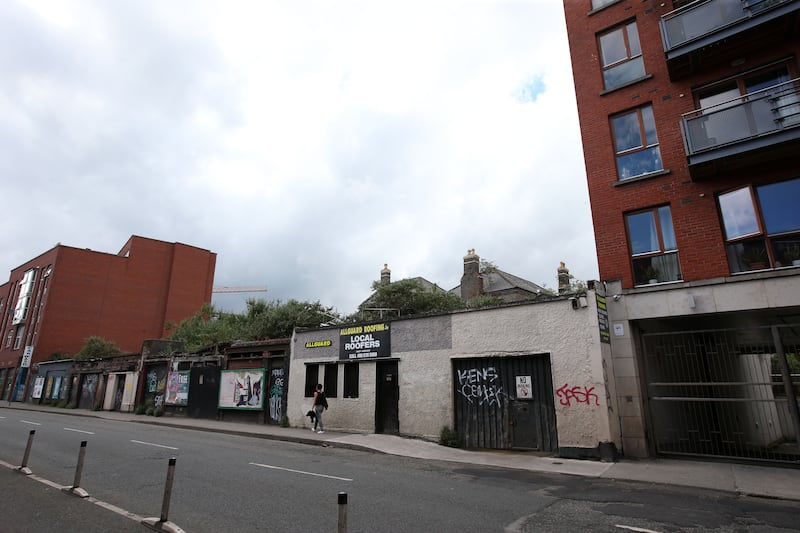
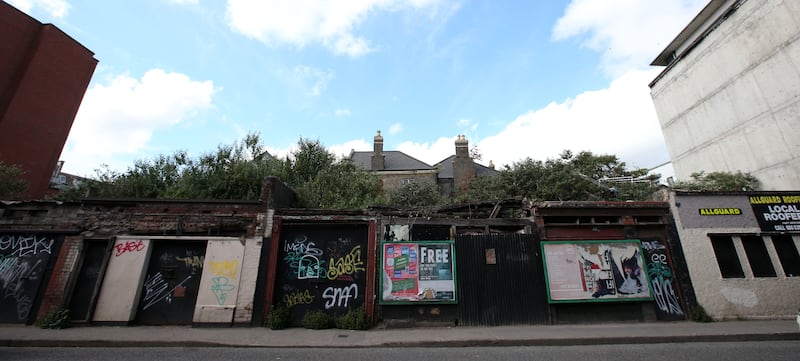
While the trust and council schemes will be used for social housing, Doherty believes efforts should be made to use these city centre buildings for affordable purchase or cost-rental housing.
“The sort of projects we’ve been doing in the city centre – six apartments in the Plough, 13 in Cavendish Row and a few others – suit us because we have a real need for one-bed units in small-scale accommodation, but not everything in the city should be social housing. What we see as a big missing piece is the lack of a designated body looking at these buildings as opportunities for affordable or cost-rental homes. Cost rental shouldn’t all be new-builds out on greenfield sites in the suburbs.”
‘Long-term benefits’
It is a point with which planning regulator Niall Cussen strongly agrees.
“There are huge long-term benefits from bringing about more living cities and town centres. Every time we enable high-quality infill or urban renewal development potential in city and town centres we are enabling people to benefit from proximity to the service and amenities they need,” he says.
[ Enough vacant buildings to solve Ireland's homelessness crisis, conference toldOpens in new window ]
“Urban regeneration is really worth it. Yes, it probably requires more effort up front in the short term, but the benefits continue to accrue for decades afterwards in creating vibrant urban centres full of life and diversity.”
If you see buildings that are deteriorating and are impacting negatively on the vibrancy of a particular urban area, that has to be an urban planning priority as much as wider measures dealing with antisocial behaviour
— Niall Cussen, planning regulator
Cussen acknowledges the additional expense of reusing older properties in the city, the difficulty in establishing who owns them, and persuading those owners to either restore them or sell them on, but he says: “We just can’t shrug our shoulders and say it’s too difficult to tackle urban dereliction and vacancy, because the viability of our cities and towns and the cohesion of communities depends on tackling where urban decline and decay is present. Some of the issues we see with city and town centres at the moment should be a rallying cry to us to double down on vacancy and dereliction and building reuse.”
Allowing buildings to deteriorate should be considered an antisocial activity, he says.
“If you see buildings that are deteriorating and are impacting negatively on the vibrancy of a particular urban area, that has to be an urban planning priority as much as wider measures dealing with antisocial behaviour.
“It’s very important local authorities have the resources, the necessary focus, and time, to understand the issues at play and to apply both the direct and indirect levers they have available to them to turn that around.”
From next month there will be a new lever available in the form of the Vacant Homes Tax, charged at the rate of three times the Local Property Tax, on residential properties which are occupied for less than 30 days in a 12-month period.
Toothless
However, Doherty says there are so many exemptions that it is pretty toothless. “One of the glaring weaknesses of the Vacant Homes Tax is that if you take out the bathroom or kitchen then it’s not habitable and not liable. Also of course, it’s self-assessed. It’s easily avoided.”
It also doesn’t apply to derelict buildings, which are covered by the derelict sites levy introduced 23 years ago. This is a significantly more substantial penalty of 7 per cent of the market value of the property, and interest on unpaid levies at a rate of 1.25 per cent per month. There are currently 107 properties on the council’s register and about 400 more under assessment by the derelict sites unit for inclusion. A “site” can qualify for inclusion on the register if it has structures which are in a “in a ruinous, derelict or dangerous condition”, similar to the GeoDirectory definition, but also more broadly as in a “neglected, unsightly or objectionable condition” or even has a build-up of rubbish.
“The public’s view of what constitutes a derelict site can be very varied and not always in accordance with the legislative definition set out in the Derelict Sites Act,” the council says. “This can, and does, negatively impact on public perception of the city council’s effectiveness in dealing with dereliction.”
As the council and Doherty have found, often identifying to whom the carrot should be offered or the stick applied can be an almost insurmountable task.
“The Land Registry is only a legal requirement for transactions since 2011, so if it hasn’t changed hands – and the Georgian core doesn’t change hands all that often – it can very hard to find the owners.” Doherty says.
“There should be a requirement for all properties to have a registered owner with the Land Registry – it shouldn’t be an onerous process to say you are the owner of a property and provide your proof, such as deeds. If we knew who the owners were, the more conversations we could have with people and the more buildings we would return to use.”
The current arsenal of sticks and even carrots may not be enough to turn around the fortunes of the city, particularly the north inner city, Graham Hickey of the Dublin Civic Trust says. The organisation has for 30 years been fighting to stem the loss of the city’s heritage, but he says there are buildings that have been vacant for considerably longer and many falling into an ever-more deleterious state.
“Money talks and at the moment the most profitable thing, certainly on the northside of the city, is the low-grade option of packing people into older buildings. So, if anything is remaining derelict or vacant in the context of the hugely lucrative stuff of what’s going on in the northside, that suggests that there are very systemic problems with those particular properties.”
‘Dedicated force’
There could be uncertainty over building ownership, or buildings which have been bought with the intention of demolition and redevelopment that hasn’t progressed. “There is always a reason why things are derelict or vacant,” he says. “In some cases it’s site assembly, in others it’s challenging title, in other cases it’s squatting.”
What needs to be considered is a “dedicated force” targeting these buildings and these areas, Hickey says.
“The whole north Georgian core is an existing landscape of dysfunctional and malfunctioning historic buildings that needs to be invested in and it needs a co-ordinated strategy. I suggest that the Department of Heritage seriously needs to put up resources and work with Dublin City Council to target the refurbishment of these buildings.”






